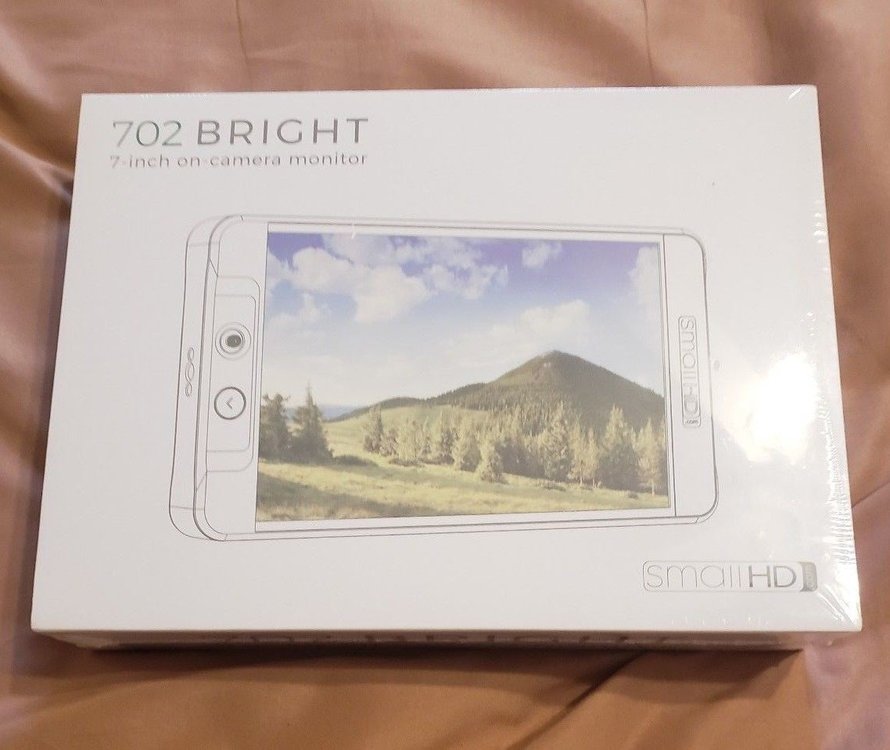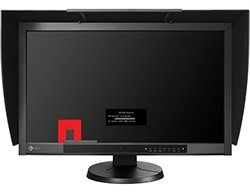Search the Community
Showing results for tags 'Screen'.
-
This SmallHD 702 Bright is brand new and in the box. The box has never been opened. As such the monitor is still covered under SmallHD's warranty. The 702 Bright is an incredibly bright, on camera, monitor that allows camera operators or 1st ACs to see the screen in daylight without a sun-hood. Which if you've ever tried pulling focus off of a Shogun, or some such monitor/recorder that has a really low nit count, in the daylight it's a disaster. The 702 has really convenient features that make life on set a lot easier. In addition to the brightness the 702 natively takes Sony BP style batteries as well as Canon LP-E6 batteries. The 702 is also able to receive SDI and put out through HDMI, or vice versa, if you ever had that need. In a lot of ways it's a really versatile monitor that's worth taking a look at. The highlights of this monitor are as follows. Specs:*7" Daylight Viewable 1080p Display *1000 cd/m² Brightness *1000:1 Contrast; 179° Viewing angle *HD-SDI and HDMI Inputs and Outputs *Dual L-Series and LP-E6 Battery Support
-
- SmallHD
- Focus Monitor
-
(and 8 more)
Tagged with:
-
Not sure where to post this. News seemed like the obvious place but I can't post there but this seems of interest to everyone here as it is about one possible future for Theatrical presentation. Giant LED displays for the cinema: https://www.redsharknews.com/business/item/4751-samsung-launches-hdr-led-cinema-screen Freya
- 13 replies
-
How do I screen grab from a blu ray or DVD? Is there a certain program I have to use? I'm using the program DVD Player on my mac and the screen shot feature, Shift + Command + 3, but this feature doesn't capture the image that's on DVD Player.
- 3 replies
-
- screengrabs
- blu-ray
-
(and 3 more)
Tagged with:
-
Hi everyone! I currently live in Milan and I'm working on a project that involves a huge green screen. We need to convert a room of 26x13 ft. into a green screen studio. I was doing some research online, looking for paintings to use, and I found two main brands of green screen paintings: ROSCO (US) and HATO (Germany). There is a very big difference of prizing between them and I was wondering if you could help me understand why? For example, in amazon.it you can find one gallon of ROSCO for 320EUR (. The gallon of HATO paintings costs around 92EUR. I don't know if this is because HATO is made in Germany and is near Italy so it costs less? Do you know any about quality differences between this two types of paintings? Do you recommend something specific? Maybe another brand that I didn't find on my research? If you have any advices on how to paint the room in order to make it work perfectly I would really appreciate it! Thanks!!
-
Hi, selling an Eizo CG275W 27" Pro LCD Monitor which has just been professionally calibrated. Monitor is still under general warranty until mid of 2017. Comes with original box. The CG275W has an internal meter that can be used for auto-self-calibration so that the screen always stays color accurate. Screen is in MINT condition and is located in Los Angeles but can ship within US. Specs Technology LCD Type H-IPS Backlight type WCG-CCFL Size 27" / 68 cm (684 mm diagonal) Native Resolution 2560 x 1440 (16:9 aspect ratio) @ 60Hz Display Size (H x V) 596.7 x 335.6 mm Pixel Pitch 0.2331 x 0.2331 mm Grayscale Tones 1024 tones (a pallete of 65281 tones) Display Colors 1.07 billion from a palette of 278 trillion (maximum) Viewing Angles (H / V, typical) 178°, 178° Brightness (typical) 270 cd/m2 Recommended Brightness for Calibration 120 cd/m2 or less Contrast Ratio (typical) 850:1 Response Time (typical) 6 ms (Gray-to-gray) Wide Gamut Coverage (typical) sRGB/Rec709/EBU/SMPTE-C: 100%, Adobe RGB: 97%, DCI: 91% Input/Output Connectors Analog None Digital 1x DVI-D 1x DisplayPort (with HDCP) 1x Mini DisplayPort (with HDCP) 3 user CAL memories that can be used to calibrate the Eizo with a 64^3 3D LUT for perfect color performance. PM me for pricing or make an offer. - Mike
-
Hello, I have done projects on and off over the years with chroma key using amateur tools like work lamps for lighting and Jo-Ann fabrics for the green screen. The results were less than ideal but worked well enough to produce the desired effect. Coming up now is a project involving green-screening the entire exterior of cars, top to bottom, front to back. Because of the requirements, I am now looking to buy plentiful amount of green screen fabric in order to cover what is required for a full-size car or truck. I have read through some of the threads here on cinematography.com and found good info concerning chroma keying and its idiosyncrasies. I had no idea that video encoding and picture resolution had such varied effects on the success of the key. That brings me to my questions. I will be using a Sony HDR-CX300 Handycam for most of the shooting. From what I understand the video encoding it uses is AVCHD. What are some suggestions I should follow towards making the chroma keying more effective when it comes to processing the video? And I also plan on using green fabrics from my local crafts store to provide for the green screen. I will most likely rig them up to an outdoor setup using PVC or the like. Apart from wind and sun, are there any other obstacles that may arise from using this cheaper alternative of green screen? Thanks in advance, Adnan




